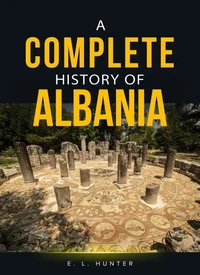Why do demons gather at thresholds? Because that's where the rules bend. Across cultures and centuries, people have met danger by giving it a face-one they could name, negotiate, bind, and sometimes befriend. Demons: A Global History follows those faces from the first incantation tablets to the latest possession film, showing how "demon" functions less as a single creature than as a human technology: a way to make risk visible and manageable. The journey begins in Mesopotamia, where Pazuzu's image protects mothers from Lamashtu, and moves through Egypt's Sekhmet, Greek daimones, jinn in Islamic law and practice, Buddhist Mara and oath-bound guardians, African tricksters, European witchcraft and its persecutions, Japanese yokai, Chinese hungry ghosts and underworld bureaucracies, Indigenous concepts of harmful spirits, and the modern afterlives of all these in literature, games, and film. Drawing on archaeology and text, ritual and law, the book keeps local names and rules intact while building a coherent global conversation.
Along the way, we learn why demons cling to doorframes and crossroads; why they police oaths, pregnancies, and boundaries; and how colonial recategorizations turned neighbors' spirits into someone else's monsters. Above all, we see how demon talk organizes care-sometimes with wisdom, sometimes with terrible consequences. Learned without being heavy, humane without being sentimental, Demons shows that the unseen is a mirror for the everyday: our ethics, anxieties, and the creative ways we make a livable world.
Why do demons gather at thresholds? Because that's where the rules bend. Across cultures and centuries, people have met danger by giving it a face-one they could name, negotiate, bind, and sometimes befriend. Demons: A Global History follows those faces from the first incantation tablets to the latest possession film, showing how "demon" functions less as a single creature than as a human technology: a way to make risk visible and manageable. The journey begins in Mesopotamia, where Pazuzu's image protects mothers from Lamashtu, and moves through Egypt's Sekhmet, Greek daimones, jinn in Islamic law and practice, Buddhist Mara and oath-bound guardians, African tricksters, European witchcraft and its persecutions, Japanese yokai, Chinese hungry ghosts and underworld bureaucracies, Indigenous concepts of harmful spirits, and the modern afterlives of all these in literature, games, and film. Drawing on archaeology and text, ritual and law, the book keeps local names and rules intact while building a coherent global conversation.
Along the way, we learn why demons cling to doorframes and crossroads; why they police oaths, pregnancies, and boundaries; and how colonial recategorizations turned neighbors' spirits into someone else's monsters. Above all, we see how demon talk organizes care-sometimes with wisdom, sometimes with terrible consequences. Learned without being heavy, humane without being sentimental, Demons shows that the unseen is a mirror for the everyday: our ethics, anxieties, and the creative ways we make a livable world.

 , qui est-ce ?
, qui est-ce ?